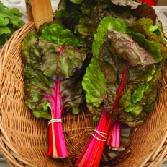-
CATEGORY ::
- All Seeds /
- All Flower Seeds /
- All Yucca Seeds




Yucca - Glauca
SEASON
Perennial
USDA ZONES
4 - 9
HEIGHT
72 inches
BLOOM SEASON
Summer to Fall
BLOOM COLOR
White
ENVIRONMENT
Full sun to partial shade
SOIL TYPE
Dry, well-drained soils
DEER RESISTANT
Yes
SEASON
Perennial
USDA ZONES
5 - 10
HEIGHT
36 - 60 inches
BLOOM SEASON
Spring through Fall
BLOOM COLOR
Red
ENVIRONMENT
Full sun to partial shade
SOIL TYPE
Sandy, well-drained soils
DEER RESISTANT
Yes
SEASON
Perennial
USDA ZONES
5 - 9
HEIGHT
96 inches
BLOOM SEASON
Summer to Fall
BLOOM COLOR
White
ENVIRONMENT
Full sun to partial shade
SOIL TYPE
Dry, well-drained soils
DEER RESISTANT
Yes
SEASON
Perennial
USDA ZONES
4 - 9
HEIGHT
72 inches
BLOOM SEASON
Summer to Fall
BLOOM COLOR
White
ENVIRONMENT
Full sun to partial shade
SOIL TYPE
Dry, well-drained soils
DEER RESISTANT
Yes
About...
Soapweed Yucca (Yucca glauca) - A tropical plant and member of the agave family, it has stiff, grey-green evergreen leaves which form 2 foot or greater clumps. Usually in summer, 6 foot tall spikes topped with large white/pale green/pink flowers rise high above the leaves.MORE YUCCA OPTIONS
Planting Directions
TEMPERATURE
71F - 75F
AVERAGE GERM TIME
14 - 21 days
LIGHT REQUIRED
Yes
DEPTH
Lightly cover seed with quality soil
SOWING RATE
2 - 3 seeds per plant
MOISTURE
Keep seeds moist until germination
PLANT SPACING
8 feet
Soapweed Yucca (Yucca glauca) - A tropical plant and member of the agave family, it has stiff, grey-green evergreen leaves which form 2 foot or greater clumps. Usually in summer, 6 foot tall spikes topped with large white flowers rise high above the leaves. The flowers give way later in summer to woody, decorative seed pods that persist on the stems. It is a native to the southwestern US and grows best in dry rocky soil. Its natural habitat is dry rocky soils and often found in short grass prairies and desert grasslands. This variety of Yucca is among the most cold-hardy and landscape ready of the species. It is also very drought tolerant making it perfect for xeriscape landscaping.
A few other names for Yucca glauca are: Soapweed Yucca, Spanish Bayonet, Narrowleaf Yucca, Great Plains Yucca, Beargrass, Great Plains Yucca. An important plant for wildlife, it provides food and nesting for small mammals, birds, and reptiles. The flowers attract butterflies, but not deer or rabbits. It is a host plant for the Yucca Moth. This moth is the only insect that has success in pollinating the yucca flower and developing fruit and is the moths' only food source. Its roots are used to make soap. Crushed roots produce a lather that is great as a soap or shampoo; thus, the name Soapweed Yucca.
Dried leaves from this plant can be used to weave baskets, mats, and sandals. Rope is made from the extracted leaf fibers. Yucca can be propagated from seeds or stem cuttings, or rhizomes. In addition to putting on a showy display, the leaves have many practical uses. The leaves can be used to make paint brushes and brooms. After splitting the leaves, they can be used as a tying material. The needle-sharp points of the leaves have been used as needles.































